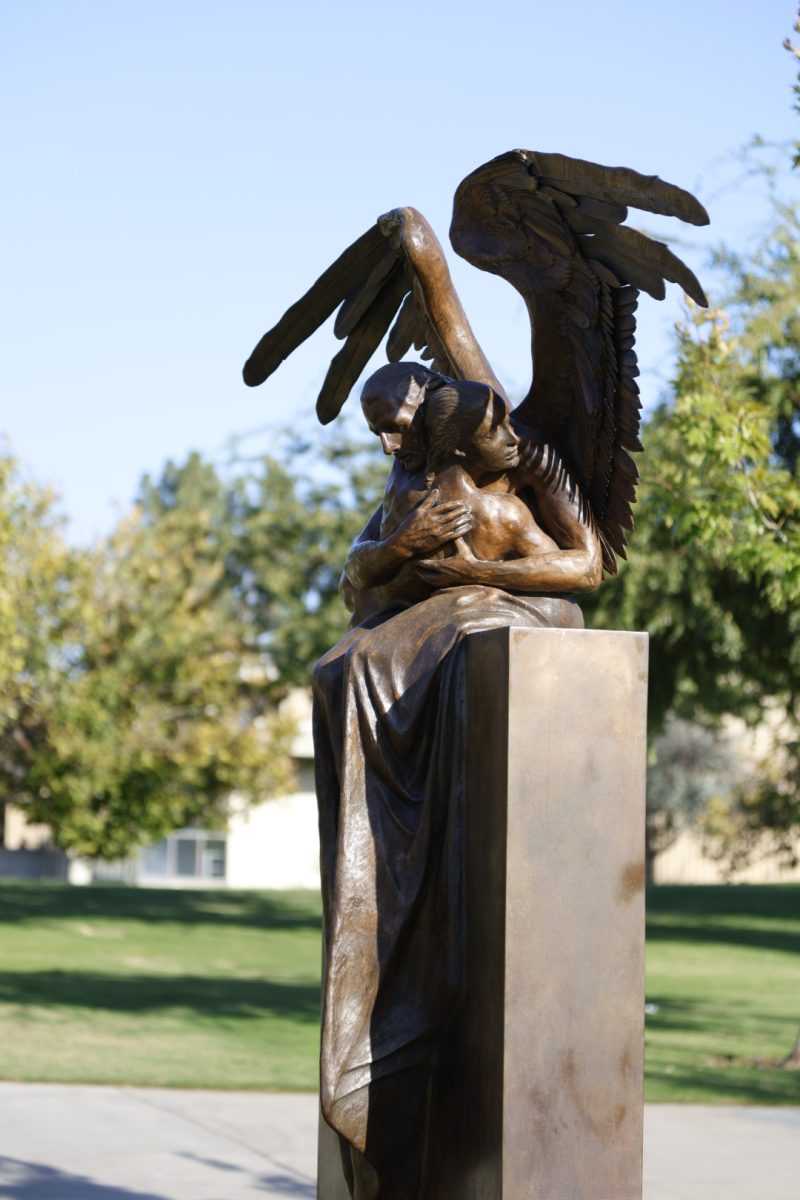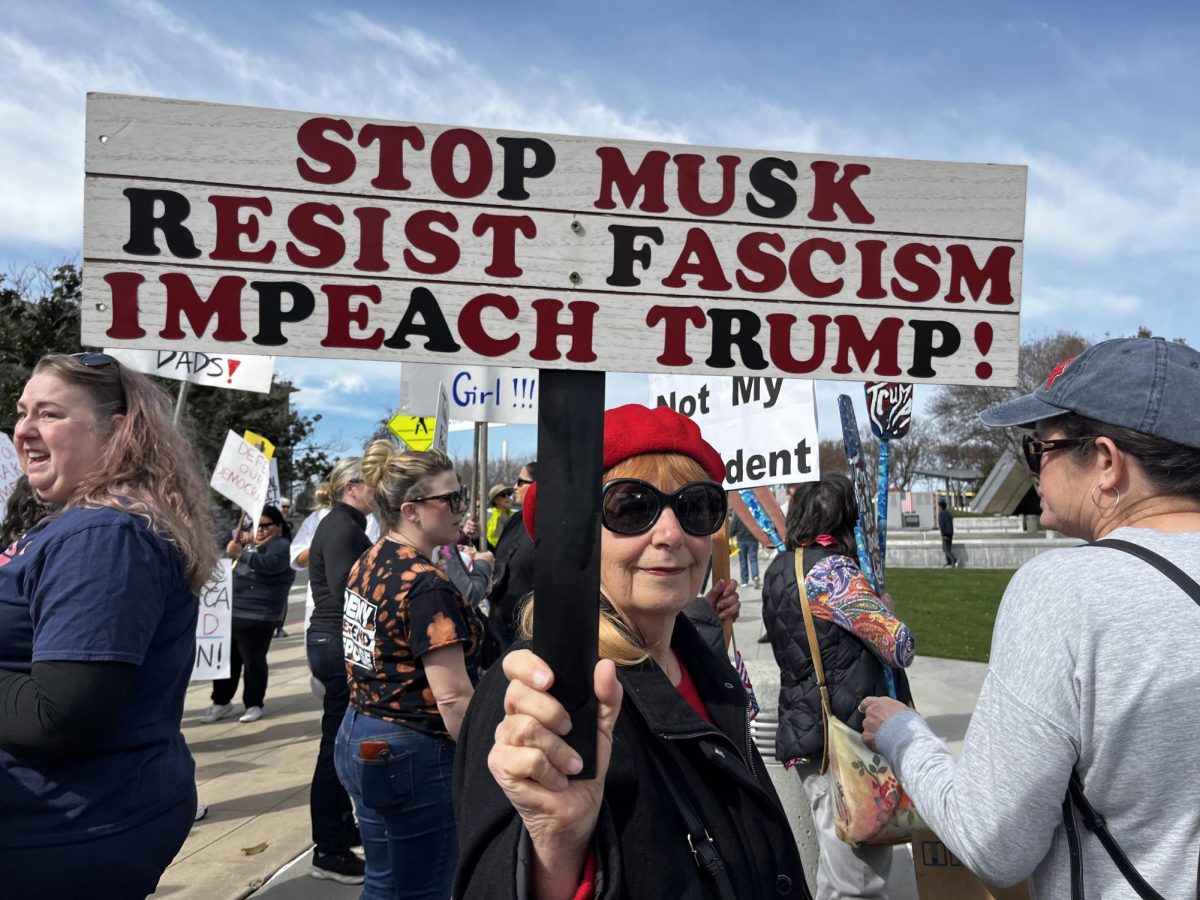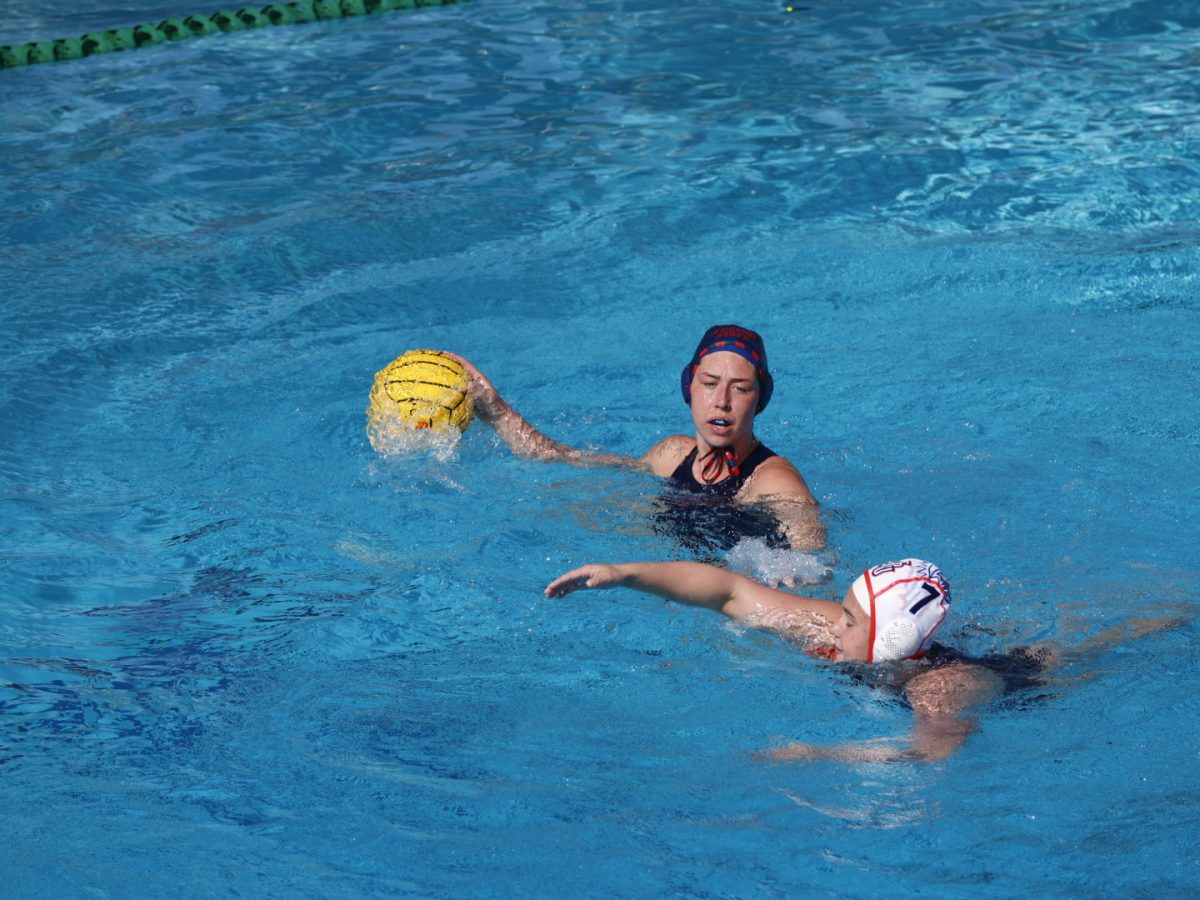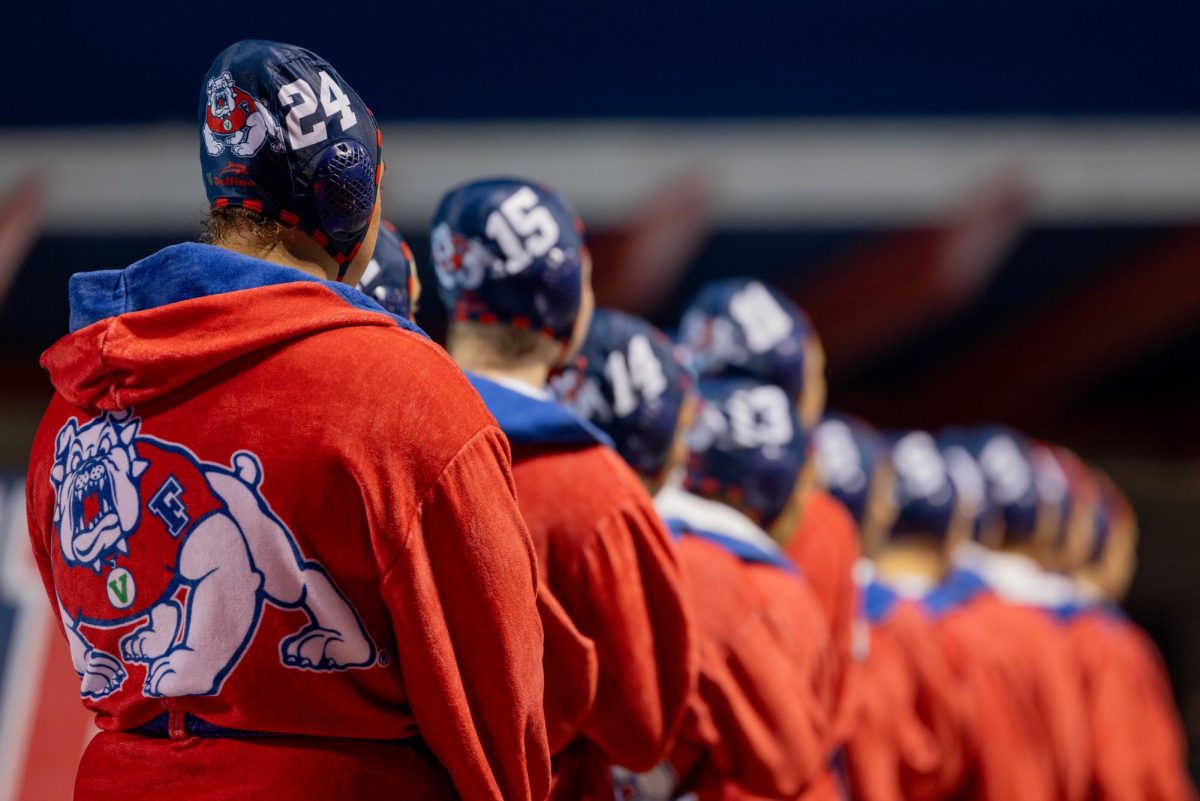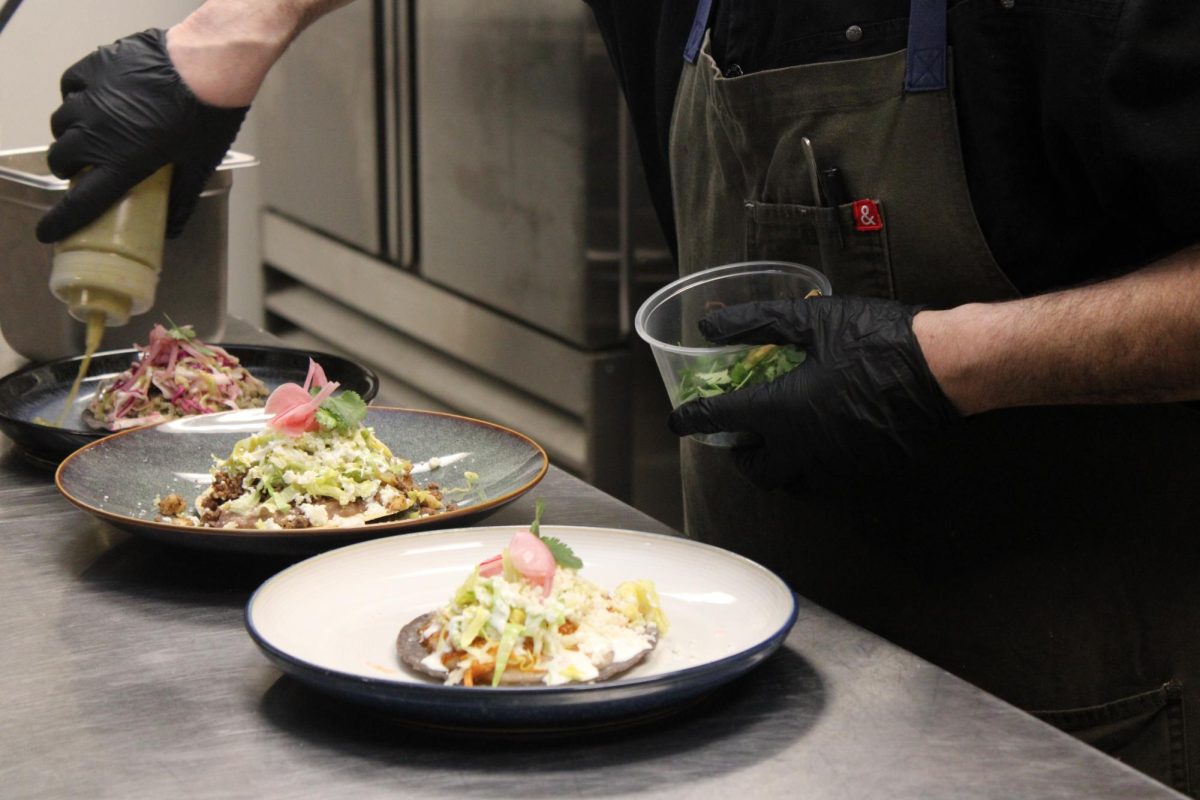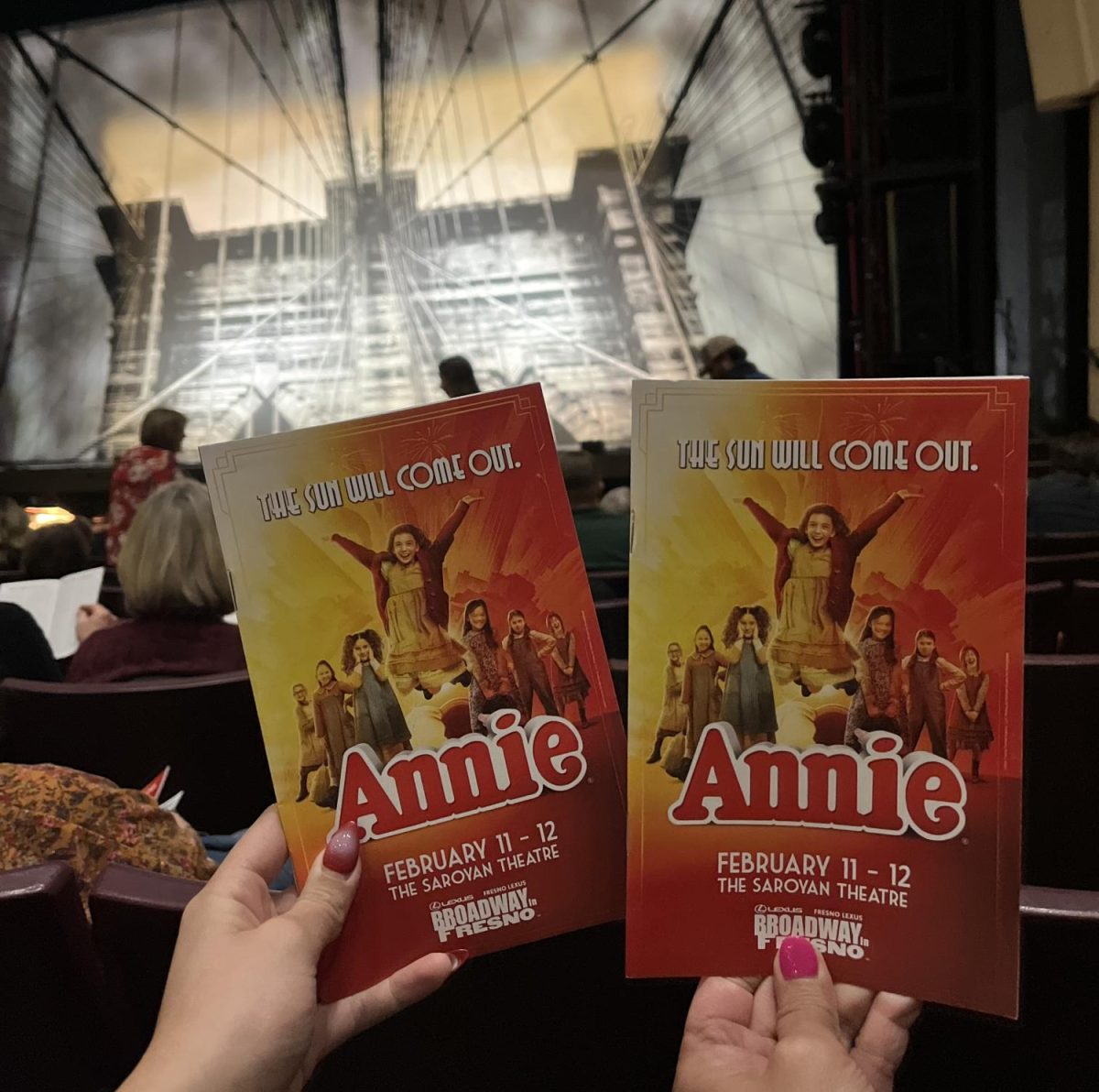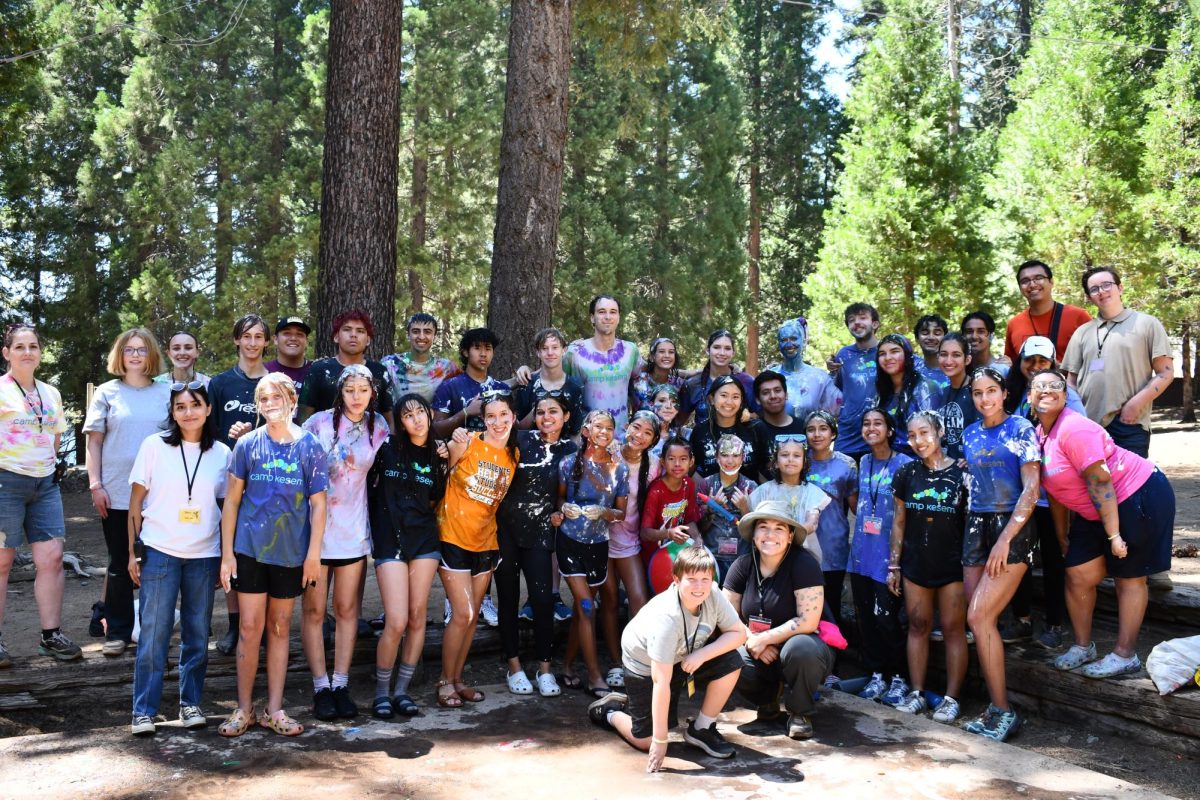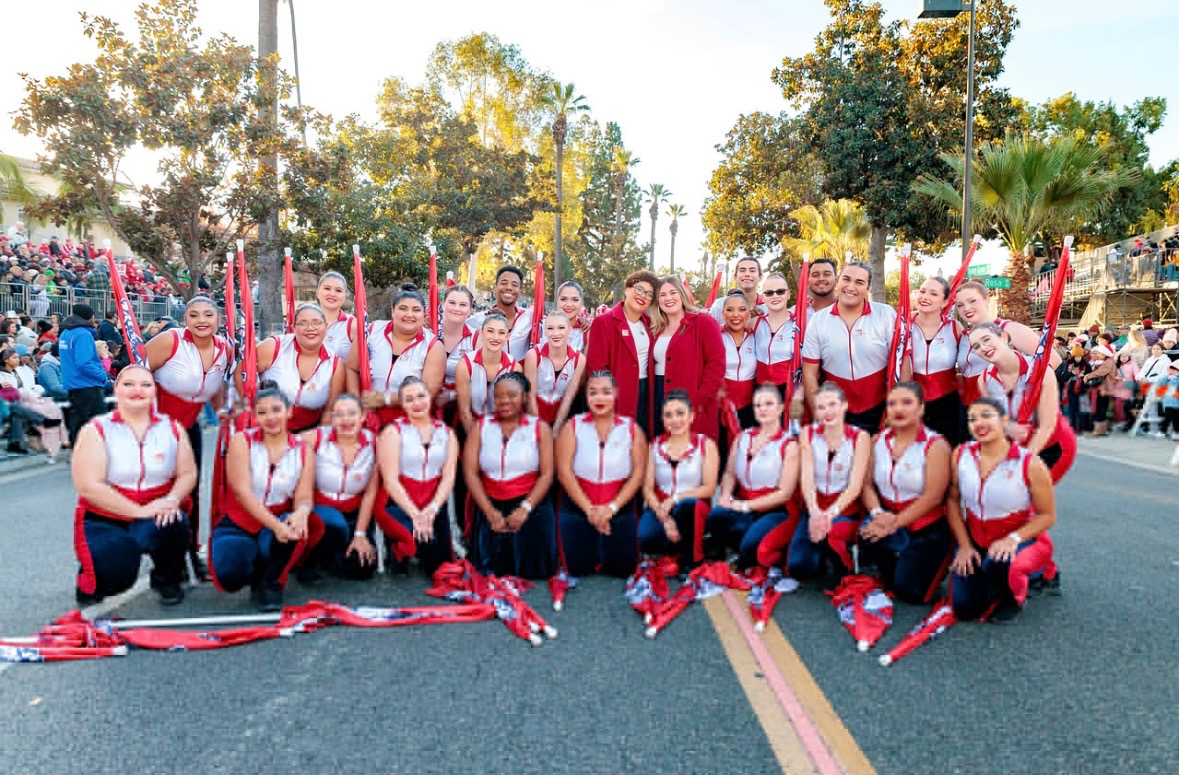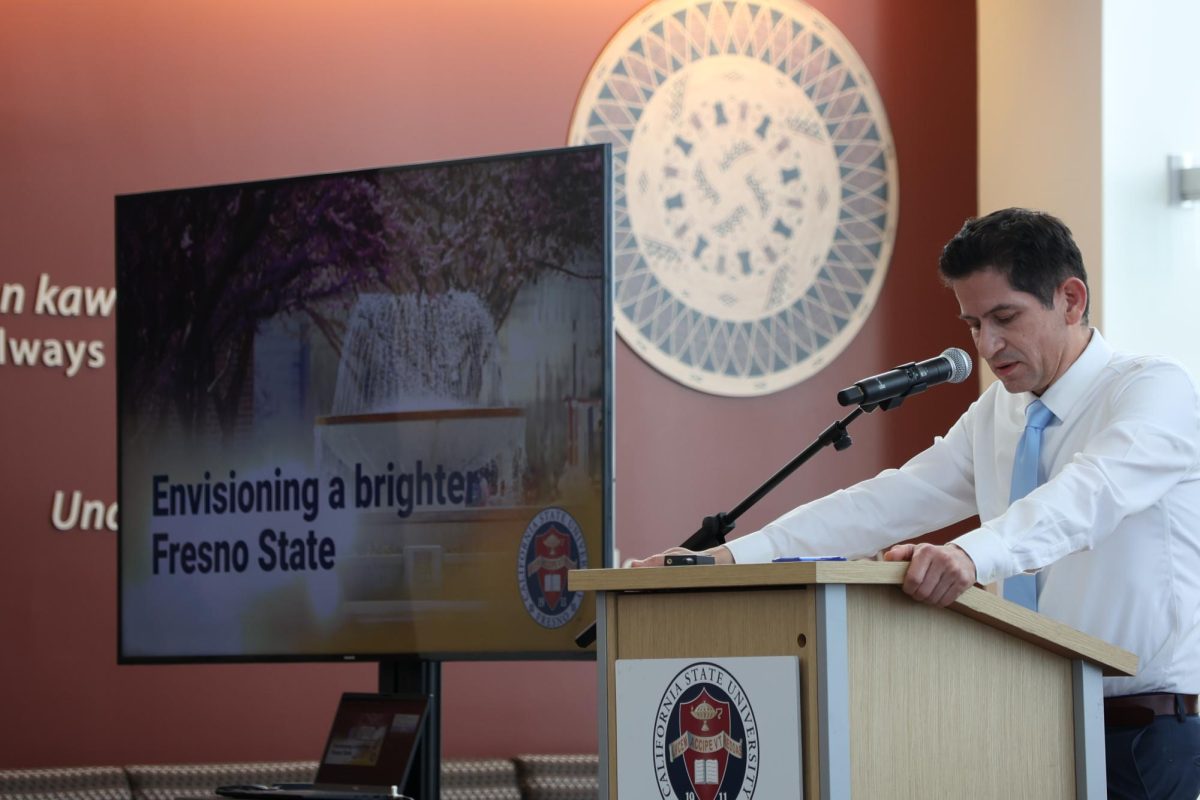Five bronze statues in the Maple Mall, watch over the students of Fresno State as they walk through the hustle and bustle of life on campus.
Jorge Marín, a contemporary artist from Mexico, brought the statues to campus in collaboration with the Mexican Consulate during the Mexican Independence Day ceremony at the Maple Mall.
Chirs Lopez, a professor in art theory and the director of the Center for Creativity (CCA), said that the statues were installed over a series of days in early September.
“It was exciting to see the cement bases being set in place, and their [the statues] positioning and to see the progress,” Lopez said.
In 2010, “Wings of the City” was originally shown in Marín’s home country of Mexico. The statues have since traveled around the world, visiting many cities and continents, including Europe, Asia, Africa and North America.
“This is the first university or college or school site to ever host them, which shows you that Fresno State is the premier Hispanic Serving Institution (HSI) in the entire 23 campus CSU system,” said Honora Chapman, dean of the College of Arts and Humanities.
The ceremony brought in a crowd of students and staff officials to view the bronze statues.
Chapman shared her thoughts on how students view the statues.
“They [students] stop and look at the art and they read about it and that is so meaningful because that is the purpose of public art exhibitions,” Chapman said.
She added that it is important for our campus to see that idea because public art is for the people.
Creating art is a long process that can take years to complete. Lopez estimated how long an art piece like this could take to complete.
“It could take months, could take years and of course that depends on each individual skill,” Lopez said.
Lopez also said that Marín, being a skilled artist, usually takes less than a week to complete one sculpture if not a month.
The significance of these sculptures is important to the campus. They have deeper roots that extend beyond Fresno State.
Chapman said that the university embraces its identity, as 60% of campus is made up of a primarily Hispanic/Latinx population.
“These sculptures are part of Mexican culture,” Chapman said. “These were made by Mexican artists and hopefully they will inspire thoughts of how dreams can take flight.”
Chapman also gave her own expression of what the sculptures meant to her.
“Sadly the liminality of the human experience is that you’re always about to do something and will you follow through,” Chapman said.
Lopez spoke similarly about the sculptures.
“These are the works that many people across cultures can relate to, in the sense of these mythological beings, these idealized forms caught in this moment,” Lopez said.
Lopez sees the relationship between the sculptures as a cohesive body of work that connects, while also existing as individualized forms.
The art has a strong meaning and presence on the campus, as students can walk by and view the five sculptures.
When describing the different types of sculptures, specifically El Tiempo, Chapman expressed that the significant meaning lies in the way the art form is created.
Chapman said the statues have this sense of decay and metamorphosis. Lopez said that the campus and students are ever changing.
Another statue that resonated with Lopez and Chapman was the bronze statue “Abrazo Monumental,” created in 2006.
“I think there’s something really great about this and just the aesthetics of it and the harmony and balance that we see between these two figures and the way this vertical base essentially they’re sitting on cuts through their forms,” Lopez said.
QR codes are posted at the base of each statue so people can get more information on the exhibit.
The bronze statues will be in the Maple Mall until August 2025.
“I think for the next year, I hope that we get more students to come in and just continue to look at these,” Lopez said.




